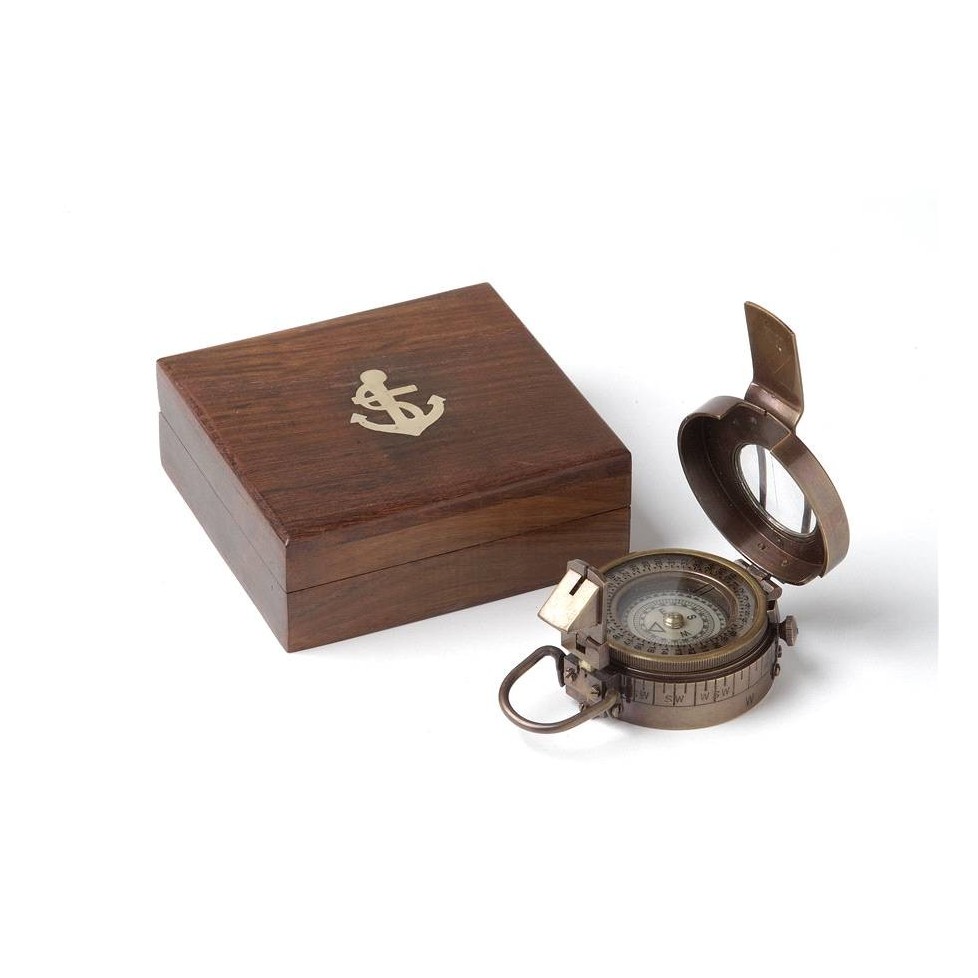

| Los pedidos realizados el día 25 de Julio, se procesarán el día 26 por fiesta local. |


Antiqued brass "Engineering" compass and acacia wood box with anchor motif.
The compass (from the Latin "passus" ("step")) opened up the world to exploration and discovery. The principle of the magnetic needle was already known to the Chinese in the 3rd century BC and was first used by feng shui priests to tell them where and how to build. It was adapted to maritime navigation by Chinese sailors around the year 1000. The first compasses comprised a magnetic needle floating in a bowl of water, with the needle suspended on a thread or threaded through a reed. The Arabs perfected this by mounting the needle on a pivot. The compass arrived in Europe between the 10th and 11th centuries, enabling sailers to cross the oceans and explorers to discover the continents. The first instrument to resemble the modern compass is attributed to Portuguese citizen Ferrande (1483).
Antiqued brass "Engineering" compass and acacia wood box with anchor motif.
IMEX Marine tide indicator, a great benchmark in quality measurement devices. With a single glance, this elegant tide indicator IMEX Marine offers you the level of the tides throughout the year.
High-precision moonphase watch from the prestigious IMEX Marine brand. Clear acrylic frame. Made in Spain. 1 year warranty. 13.6x136x3 cm.
Small but full of charm, this aluminium compass features a printed wind rose on the bottom. A symbolic object that invites you to dream of unknown paths. Lightweight and functional, it’s perfect as a decorative piece, travel keepsake or meaningful gift for those in search of their true north. Approximate dimensions: 4.4 cm in diameter x 1 cm high.
Small marine table bell made of polished and varnished solid brass.
Antiqued brass pocket watch and chain with blue velvet bag.
Barometer whose sphere is made in plastic with a charming support made in MDF.